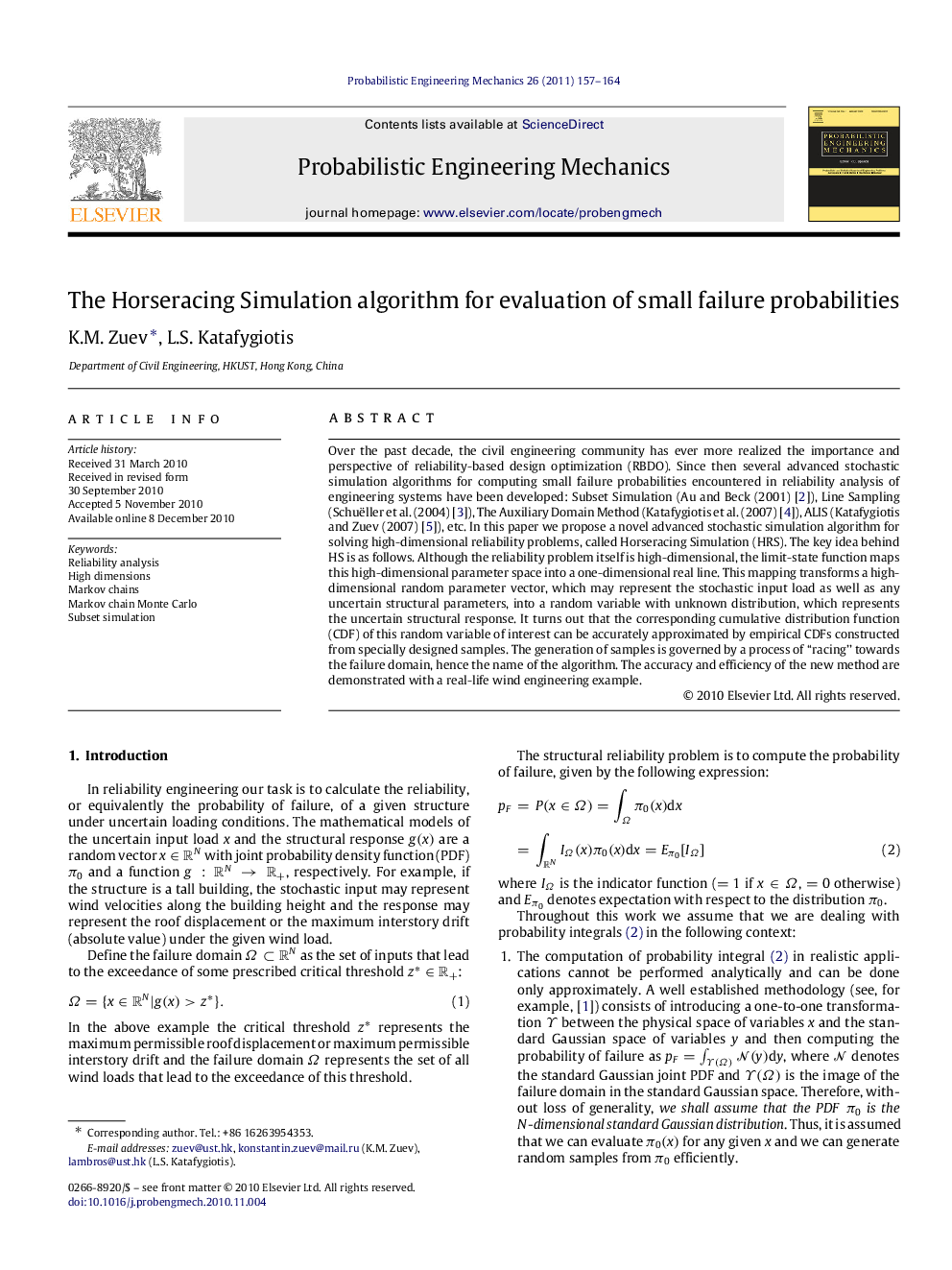| Article ID | Journal | Published Year | Pages | File Type |
|---|---|---|---|---|
| 805320 | Probabilistic Engineering Mechanics | 2011 | 8 Pages |
Over the past decade, the civil engineering community has ever more realized the importance and perspective of reliability-based design optimization (RBDO). Since then several advanced stochastic simulation algorithms for computing small failure probabilities encountered in reliability analysis of engineering systems have been developed: Subset Simulation (Au and Beck (2001) [2]), Line Sampling (Schuëller et al. (2004) [3]), The Auxiliary Domain Method (Katafygiotis et al. (2007) [4]), ALIS (Katafygiotis and Zuev (2007) [5]), etc. In this paper we propose a novel advanced stochastic simulation algorithm for solving high-dimensional reliability problems, called Horseracing Simulation (HRS). The key idea behind HS is as follows. Although the reliability problem itself is high-dimensional, the limit-state function maps this high-dimensional parameter space into a one-dimensional real line. This mapping transforms a high-dimensional random parameter vector, which may represent the stochastic input load as well as any uncertain structural parameters, into a random variable with unknown distribution, which represents the uncertain structural response. It turns out that the corresponding cumulative distribution function (CDF) of this random variable of interest can be accurately approximated by empirical CDFs constructed from specially designed samples. The generation of samples is governed by a process of “racing” towards the failure domain, hence the name of the algorithm. The accuracy and efficiency of the new method are demonstrated with a real-life wind engineering example.
